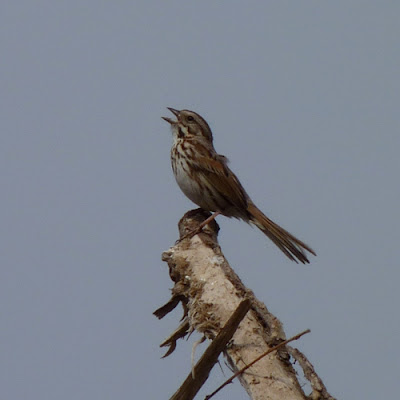Most field guides present hawks the way you see them at close range. They show the perched raptor, and usually a view of the flying hawk from underneath, with all of the field marks visible. That works well if you are looking at a hawk flying a little above the treetops or perched across a field. But how do you identify a flying raptor from a mile away? Veteran hawk watchers are able to do that regularly; in fact, compiling a complete count may require identifying birds at such distances.
The secret is to pay less attention to details and focus more on shape, general plumage patterns, and flight style. If this sounds familiar, it is very much like what Richard Crossley encourages in the introduction to
his new ID guide. These are all characteristics that remain consistent even at a very long distance, and in combination they are distinctive enough to make most raptors identifiable. It is these traits that are the focus of Jerry Liguori's latest book,
Hawks at a Distance: Identification of Migrant Raptors.
After an introduction to general raptor identification and migration watching, Liguori presents identification tips species by species. For each species there is a short description of key traits with particularly distinctive characteristics marked in bold type. These accounts vary in length, depending on the amount of sexual dimorphism, regional variation, how much adults differ from juveniles. The descriptions focus on flight posture and shape, with attention to which plumage patterns will stand out at a distance (for example, the belly band of a Red-tailed Hawk or the pale chest of a Peregrine Falcon). Each text account is followed by a series of plates showing the raptor species in flight, from different angles and in varied lighting conditions. (The photos do not include any perched raptors.) The photos are sufficient to show the characteristics described in the text. I found it somewhat distracting to have to flip between the plates and the descriptions; I am not sure how much of the textual information I absorbed without having a visual reinforcement on the same page.
In some ways this represents an updating of Dunne, Sibley, and Sutton's
Hawks in Flight with better photography. While he does not use Dunne's colorful analogies, Liguori helps the reader to learn the personality of a species, i.e., its flight style and its typical behaviors. As I was reading, I felt that it would have been useful to have a book like this a few years ago when I was banding raptors in Cape May. Many raptors that passed by never came into the station, and some of them passed quite high overhead. Some of them I could identify; others escaped me. With a resource like this one, perhaps I could have identified a higher percentage of them.
Liguori's
Hawks at a Distance, a companion to his previous
Hawks from Every Angle, is clearly written and builds the skills necessary to identify migrating hawks, even under less-than-ideal conditions. Because of that I would recommend it for hawk watchers and anyone with a general interest in raptors. However, it does not give equal attention to every raptor in North America, as it emphasizes the ones likely to appear at migration sites. Therefore, I recommend pairing them with one of Brian Wheeler's excellent guides, either
A Photographic Guide to North American Raptors or one of his regional guides,
Raptors of Eastern North America or
Raptors of Western North America. (Unfortunately both regional guides seem to be out of stock on Amazon right now, which is really a shame.) The latter two books, in particular, cover more species and provide more information about the birds' life history, though they are not as useful for flight identification as Liguori's guides.





















































